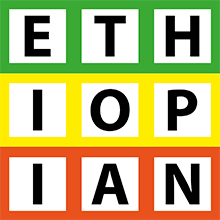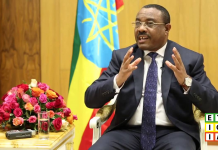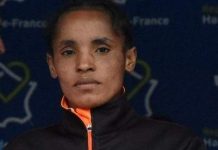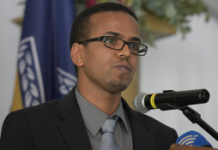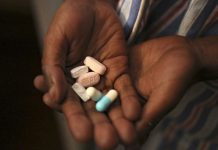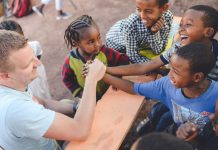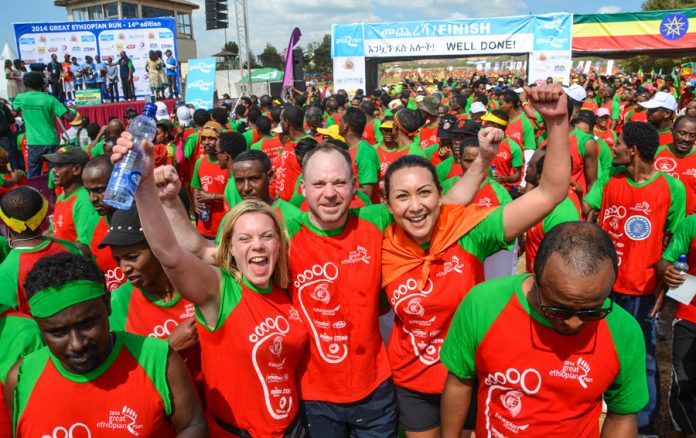The first edition of the Great Ethiopian Run was held on November 25, 2001 with ten thousand participants. Comparing it to the celebrated great runs of other countries, the number may have seemed not impressive. But for Ethiopia it was considered a great event, and a great beginning. Every one was excited and if we look back at it today, Haile and those who collaborated with him could very well feel proud of it. Today, the Great Ethiopian Run is noted as one of the yearly great road runs one should not miss.
Organizing successfully a huge sporting event such as the Great Ethiopian Run is not easy and at its seventeenth chapter, Haile and company do know better how to do it than in 2001. Today, having learnt from years of experience and having reached the 44 thousand mark of participants, one can observe that it has come a long way and it has consolidated its mark with better organisation and better results.
As the years progressed and the event became an established traditional rendez-vous for thousands of people, it attracts more and more people, more publicity, and more sponsorship and the winners are awarded better prizes.
The Great Ethiopian Run is now a souvenir for many, a moment to cherish with others, watch it ‘live’ on TV or take part in it physically. It is a moment of fun and excitement, a festival. It has become more and more popular, more and more colourful and eventful. With more sponsors and philanthropic organisations taking part, there are no limits to what it can attain.
The Great Run is also a wonderful occ asion for new athletes to emerge and shine. Kenenisa Bekele, Tirunesh Dibaba, Berhane Adere and Sileshi Sehen, are just a few among those who shined in the Run and then exploded in the international arena.
The yearly get together of the Great E thiopian Run has also travelled to the regions with several categories such as the Children Chapter and the Women’s Chapter. It has indeed become a movement helping raise awareness for child rights and women equality rights. There is no doubt that the Great Ethiopian Run has placed its roots deep in the country and even in the psyche of the population. The movement is bound to expand and grow. It is in a way a good contribution for the development efforts of the country striving to come out of poverty and reach the middle income countries in a few years.
When it first began, the Great Ethiopian Run was unprecedented even at the sub-Saharan level. Haile pioneered it and in sixteen years, it has grown exponentially. It is now an established annual event not to miss.
All in all, it is now better placed to raise huge sums for any sort of charitable endeavour or involve masses and organizations with several noble causes. It attracts new athletes and is an inspiration even for little kids. As a movement with multiple social ramifications, it is rising up to becoming an engine of development as well.
The first Great Ethiopian Run had principally one cause: the campaign against HIV/AIDS, and the motto was ‘Value Your Life’. It was a response to the then alarming spread of HIV. Today, the situation may not be as severe as then, but with recent surveys showing some risk of relapse, ruling out the need to revisit the campaign may be unlikely.
In fact from being the talk of a nation involving practically everyone to the recent total eclipse of the whole issue, as if it were completely resolved, there was the fertile ground for the virus to re-emerge. The impact of the first Great Ethiopian Run was brilliant with the message well conveyed, loud and clear. A reversal of the achievement in this regard was found to be a concern of the authorities of the Ministry of Health and the UNAIDS. The target of eradicating the virus from the earth by 2030 does not seem to materialize. Hence the project called 90-90-90 was designed. By 2020, 90% of all people living with HIV will know their HIV status, 90% of all people with diagnosed HIV infection will receive sustained_anti-retroviral therapy, and 90% of all people receiving antiretroviral therapy will have viral suppression. Apparently, with a new generation of youths who have not had enough exposure about the risks of HIV, they being too young during the intense campaigns carried out years back, a new call may be advisable.
The marking of World AIDS Day will in this sense be of help. We may need to pull up our sleeves and begin to intensify our campaign of sensitization and stop the relapse. The recent complacency has created some anxiety among campaigners with the risk of reversing the achievements of the past.
December 1, the ‘World AIDS Day’ is around and new mottos and slogans will as usual characterize it with new scientific developments, new experiences across the world shared among those who live with the virus as well as those who try and contribute to the fight. With presentations of research papers, discussions will follow and progress reported. Lessons and recommendations will also be part of the menu.
Participation in sports collectively such as in the Great Ethiopian Run helps to stimulate an entire population to engage in physical exercise and that means having a healthy population. In fact the famous Latin dictum says “mens sana in corpore sano”, meaning ‘the mind is healthy only if the body is healthy’.
One other very important objective the Great Ethiopian Run was meant to address and did succeed in the endeavour was the issue of the image of Ethiopia. This is now even more important because with the growing attention and recognition the Great Run has been acquiring, its influence on the image building of the country has become substantial.
For too many years, Ethiopia has not been having fair treatment or coverage by the foreign media. All negative epithets were attributed to it. This had to change and is now changing with activities such as the Great Run and the recent socio-economic achievements of the country. The Run opens a window of opportunity to showcase that Ethiopia is not as it is portrayed by a certain media.
The recent successes not only in the economic sphere but also in the political, diplomatic and cultural arena mean that the country is now in a new rising trajectory. One can observe that even from the images that the Great Run portrays and the scores of journalists who come here to report. Addis can exhibit its most recent expansion and modernization facets along the itinerary of the Great Run.
The changes that the city has undergone from the first Great Run to the 17th one could easily be observed. The facilities such as sky rising hotels, sophisticated infrastructure and other amenities mean that tourists can jot down Addis on their list of next destination. The shining successes of the national carrier, Ethiopian Airlines, become an extra incentive to fly to Ethiopia and tour. The various UNESCO acclaimed and registered cultural heritage sites and the intangible heritages add to the package.
Diplomatically, Ethiopia is also well recognized as an island of peace and stability in a volatile surrounding where there is constant turmoil. Welcoming the hundreds of thousands of refugees fleeing dangerous zones and contributing to peace making and peacekeeping has also helped Ethiopia write its name on the golden books of the UN and the AU. This makes it an influential reality in Africa. It hosts the biggest conferences of the continent every year and few countries in the world match the kind of diplomatic representation Addis Ababa enjoys. Hence, the diplomatic clout of Ethiopia is not negligible. In fact, it is on the rise.
It is inevitable that all these factors do contribute to the image and stature of the country, and eventually to its rising role in international affairs. Economically, with the fast expansion of industrial parks that specialize in textile and manufacturing, it is bound to be the biggest African hub in the sector, the largest economy in the sub-region. Foreign direct investment as well is on a record high with huge and reputed international companies eying the country as their next preferred investment destination. Cheap and clean energy, expanding infrastructure such as roads and railroads, easy access to seaports and cheap and abundant workforce as well as peace and stability qualifies it with comparative advantage in the choice of investment.
The expansion of environmentally friendly parks means that Ethiopia is doing its part in reducing gas emissions and fighting climate change. This is an incentive for foreign companies because the growth and progress of Ethiopia will contribute to the growth and progress of Africa as well. With a huge population of about a hundred million, mostly youths, Ethiopia is being recognized as a reality worth emulating, worth watching.
Hence among all these factors that contribute to this huge package, the Great Ethiopian Run can be taken as another one. Ethiopia now has one more gem to the kind of tourist attractions it is already credited with. Ultimately, it all adds up to help the country earn more of the foreign exchange income that the expanding economy needs to continue on the new trajectory.
Source: The Ethiopian Herald
By: Fitsum Getachew
